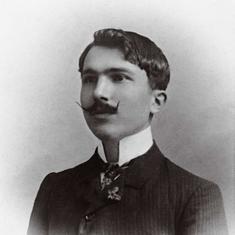The father-son battle in the Samajwadi Party has assumed monumental proportions in the last few days. On December 30, Mulayam Singh Yadav expelled son and Uttar Pradesh Chief Minister Akhilesh Yadav, along with party general secretary Ramgopal Yadav, from the party for six years after a dispute over the selection of candidates for the Assembly elections, which is just months away. The expulsion order was overturned the very next day.
On Sunday, Akhilesh Yadav showed his clout in the organisation and engineered a coup, replacing his father as the party’s national president. Claiming that the move was unconstitutional, Mulayam Singh Yadav expelled Ramgopal Yadav again for “conspiring to harm the Samajwadi Party” ahead of the elections to help the Bharatiya Janata Party. He called for a party convention on January 5 even as the Akhilesh Yadav camp refused to cede ground and categorically said the decision to remove the patriarch from the president’s post was legal.
On Monday, the battle shifted to Delhi, this time over the Samajwadi Party’s symbol, the bicycle. Mulayam Singh Yadav approached the Election Commission of India to claim the party symbol. He also cancelled the meeting scheduled for later this week, with his supporters saying they would instead focus on working for the elections.
The importance of a party symbol in a state like Uttar Pradesh cannot be emphasised enough. With a large illiterate and semi-literate population, the symbol is the single most important asset of any party. Even those who have no idea about candidates end up voting for the party, given the familiarity of the symbol.
If the father and son fail to reconcile their differences, both factions could end up making a claim for the symbol by declaring themselves the original Samajwadi Party before the Election Commission.
While such a situation may be rare in North India, it is all too familiar down south, where parties have witnessed pitched battles over party symbols. Besides, internal squabbles, often between family members, have brought tectonic shifts even in those parties led by highly charismatic leaders.
NTR’s fall, Naidu’s rise
Take NT Rama Rao, who enjoyed unparalleled popularity in united Andhra Pradesh. A cine star who ruled Telugu cinema for close to four decades, he inspired adulation akin to religious fervour.
Within months of launching the Telugu Desam Party in March 1982, Rao won a thumping majority in the 1983 Assembly elections. Such was his charisma that the party became the largest Opposition in the Lok Sabha in 1984. While the Congress swept the elections that year with 404 seats as a result of the sympathy wave created by the assassination of Indira Gandhi, Rao dominated Andhra Pradesh, winning 30 of the 42 constituencies. Rao lost the Assembly elections in 1989, but stormed back to power in 1994.
But by this time, there were doubts over his health as he had suffered a stroke in 1992. There were also complaints of Rao being inactive and dismissive of other leaders. There was palpable anger over the interference in party affairs by his second wife Lakshmi Parvathy.
Matters came to a head in 1995 as speculation grew that NTR planned to hand over the party reins to Parvathy. His son-in-law, Chandrababu Naidu, saw this as the death knell for the party and began working to overthrow NTR, with the support of the veteran leader’s other family members. After the Telugu Desam Party lost a few cooperatives in a local election, NTR blamed Naidu’s supporters for the defeat and removed eight MLAs. When Naidu demanded the revocation of this move, he was expelled from both the party and the cabinet.
Given the chaos in the party, NTR decided to dissolve the government and go for fresh polls. He called for a cabinet meeting on August 25, 1995 and sent a resolution to this effect to Governor Kishan Kant.
But the governor did not act immediately. In similar vein to current developments in the Samajwadi Party, Naidu assembled his supporters at the Hotel Viceroy in Hyderabad and passed a resolution expressing lack of confidence in NTR’s leadership. He also declared himself the leader of the Telugu Desam Party and urged the governor not to dissolve the Assembly as he had the support of the majority of MLAs. Naidu’s election as chief minister stood the test of judicial scrutiny. NTR died a few months later.
Coincidentally, the Telugu Desam Party’s symbol is also the bicycle.
Two leaves and AIADMK
In neighbouring Tamil Nadu, two factions of the All India Anna Dravida Munnetra Kazhagam came to blows after founder MG Ramachandran’s death in December 1987. While his wife VN Janaki took over as chief minister with the support of senior leader RM Veerappan, J Jayalalithaa staked claim to the party along with several other senior leaders such as Panruti S Ramachandran.
Janaki’s government fell the following year after the dismissal of 33 MLAs belonging to the Jayalalithaa faction. But the fight for control of the party continued. It reached the Election Commission ahead of the 1989 elections. Unable to come to a conclusion swiftly, the commission decided to suspend the famed two leaves symbol of the party that had behind it the legacy of MGR.
While the Ja faction led by Janaki contested the polls on the two doves symbol, hoping to mimic the two leaves, the Jayalalithaa-led J faction was allotted the cock symbol. The latter won 27 seats while the former could manage just two. After the defeat, Janaki retired from politics and the party was unified by Jayalalithaa. The Election Commission then restored the two leaves symbol.

DMK and Vaiko’s exit
In 1993, it was the turn of the other big party in Tamil Nadu, the Dravida Munnetra Kazhagam, to face internal strife. Having been trounced in the Assembly elections two years earlier in the wake of the assassination of Rajiv Gandhi, party president M Karunanidhi had begun promoting his son MK Stalin as his political heir.
But within the party, Stalin’s popularity was no match for that of V Gopalasamy, who in 1998 changed his name to Vaiko. In 1993, the party’s general council expelled Vaiko, accusing him of conspiring with the Liberation Tigers of Tamil Eelam to kill Karunanidhi.
Given Vaiko’s star status in the party, the expulsion caused a huge rift. As many as nine district secretaries moved out with Vaiko. The Communist Party of India (Marxist) termed his exit a “vertical split” in the Dravida Munnetra Kazhagam. The message that spread soon after was that Vaiko was trying to pull more leaders to his side with plans to stake claim to the party and its symbol. The party called an emergency meeting of its general council and passed a resolution reiterating its loyalty to Karunanidhi. This resolution, with supporting documents running into thousands of pages, was sent to the Election Commission before Vaiko could make his move.
A few years later, TN Seshan, the chief election commissioner then, remarked that the paper’s paperwork was so thorough that it left no room for doubt which side had the majority.
The majority factor
According to former Chief Election Commissioner N Gopalaswamy, for a competing faction to take over a party, it is imperative that it have majority support in different decision-making bodies of the organisation and not just in the legislative party (MLAs). This could include the parliamentary board, executive council and general council.
The example of the Dravida Munnetra Kazhagam is crucial. In the days to come, if Akhilesh Yadav decides to stake claim to the Samajwadi Party, Mulayam Singh Yadav would have to hope that party records are in perfect order to come to his rescue.
Thus, whether Mulayam Singh Yadav rides the bicycle in the upcoming elections would be determined by the “test of majority”, said Gopalaswamy.










